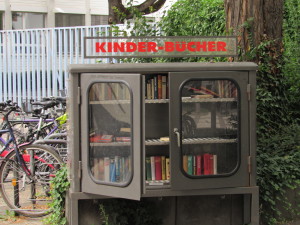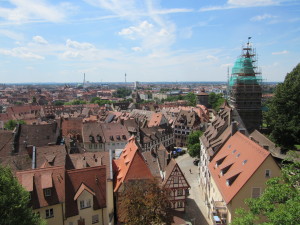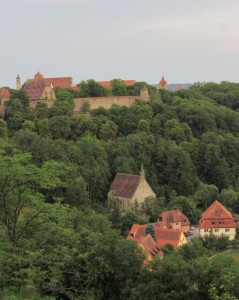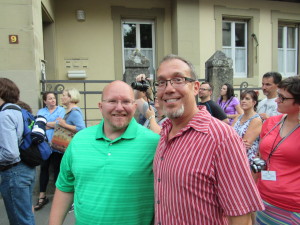By Noah
A day out on the Rhine.
Today was another one those days (similar to our day in Nuremberg) where we packed as much as possible in order to fully reap the benefits of our surroundings. Today we found ourselves in the incredibly beautiful upper middle Rhine Valley – the only section of the river that is a UNESCO sight and filled with lots of things to do. Hiking, biking, and boating are just a few of the many activities to enjoy in this area.
After much thinking and consideration as to what to do, we decided on one of the most popular things at the Rhine: biking along the river and returning on a ferry. Thanks to the helpful folks at Burg and Bike in Lahnstein, we got our whole family outfitted with bikes and a handy map showing us all of the 40 castles and palaces in the upper middle Rhine area. Castles are one of the coolest things to see so everyone was very excited.
Our first section of the hike was very flat and we all took it at a leisurely pace in order to enjoy the incredible surroundings. About halfway into our trip the bike trail ended so we had to take a ferry across the river to continue our ride on the other side where we stopped to have lunch. After a tasty bratwurst lunch we were fully re-energized to continue our ride. Riding along the banks of the river surrounded by castles, steep green cliffs, and tiny little German towns was amazing.
Other then a small number of cyclists, the trail was pretty empty. From the churches in Lalibela, Ethiopia, to the Lycian Way in Turkey these are the moments from the trip that really stick with me. Though the super touristy sights we have seen such as the Duomo in Florence or The Sagrada Familia in Barcelona were also great to see, there is something special about having the place basically all to yourself.
After a couple more hours we reached our destination: the town of St. Goar where we hopped on a ferry and settled in for the long ride back to the start. As our unfortunately short time in Germany comes to a close I’m sad that were leaving such a incredible place, but also excited for our next (and very sadly, last) leg of our trip.





































Recent Comments